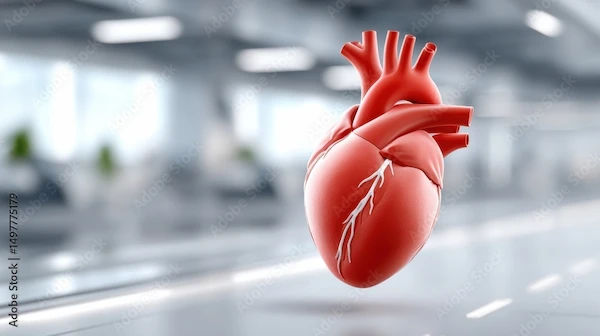How To Reduce High Triglycerides Symptoms?
Learn how to reduce high triglyceride symptoms with dietary changes, exercise, medications, and regular monitoring. Discover causes, risks, and effective management strategies for better heart health.

Written by
Last updated on 3rd Jul, 2025
Introduction
Blood contains fat or lipids known as triglycerides, which are an important energy source. Triglycerides are the products of excess calories stored in fat cells and released when energy is needed. Higher levels suggest metabolic imbalance and increased health risk.
Triglyceride levels play an important role in cardiovascular health. Normal levels are below 150 mg/dL, and elevated levels of 200 mg/dL and beyond can cause severe medical problems.
Keep reading to find out how to manage and minimise high triglyceride symptoms effectively.
Causes of High Triglycerides Symptoms
Some common causes for elevated triglyceride levels include:
Being overweight or having obesity
Lack of sufficient physical activity
Eating high-fat or high-sugar content foods
Excessive alcohol consumption
Certain treatments for HIV, breast cancer, and sometimes for high blood pressure
People living with HIV
Being of South Asian descent (from India, Pakistan, Bangladesh, etc.)
Metabolic disorders which disrupt the body’s ability to break down lipids (fats, cholesterol, etc.)
Conditions like diabetes, kidney disease, thyroid disorders and liver disease
1. Pharmaceutical Cause
Certain medications may lead to increased triglyceride levels. These include:
Second-generation antipsychotic medications, such as clozapine and olanzapine.
Antiretroviral therapy (ART) for HIV treatment contains protease inhibitors.
Nonselective beta-blockers.
Corticosteroids.
Cyclophosphamide.
Oral estrogen.
Thiazide diuretics.
2. Genetic Predisposition
Triglyceride and cholesterol can be affected by lipid disorders. Examples include:
Elevated triglycerides, high LDL cholesterol, and low HDL cholesterol and familial combined hyperlipidemia.
Familial hypertriglyceridemia (type IV familial dyslipidemia): Elevated triglyceride levels.Familial dysbetalipoproteinemia (type III hyperlipoproteinemia): Increased triglycerides and total cholesterol.
Familial Chylomicronemia Syndrome (FCS): Triglyceride levels > 1,000 mg/dL.
3. Lifestyle Influences
In addition, the body is incapable of metabolising fats efficiently with a sedentary lifestyle, thus resulting in triglyceride accumulation. Chronic stress, inadequate sleep, and smoking prevent lipid metabolism, increasing the chances of high triglycerides.
Health Risks Associated with High Triglycerides
Here are some of the main risks associated with asymptomatic high triglycerides:
Cardiovascular Disease (CVD): Excess triglyceride in the body contributes to the development of arterial plaque that increases chances of atherosclerosis. This condition also increases the chance for stroke, heart attacks and hypertension, making triglyceride an important element of cardiovascular health.
Pancreatitis: Acute pancreatitis is caused by very high triglyceride levels, usually above 500 mg/dL. Thus, the inflammation of the pancreas causes a painful and potentially life-threatening disease that requires immediate medical attention.
Metabolic Syndrome: Triglycerides are often high in metabolic syndrome, a condition that includes other problems such as high blood pressure, high blood sugar, too much body fat around the waist, and abnormal cholesterol levels.
Type 2 Diabetes: High triglycerides can be a sign of insulin resistance and, in turn, type 2 diabetes.
Non-Alcoholic Fatty Liver Disease (NAFLD): NAFLD can be caused by increased triglycerides, which can cause fat to build up in the liver.Peripheral Artery Disease (PAD): High triglycerides can raise the risk of PAD or narrowing of the arteries that carry blood to the limbs.
Eye Complications: High triglycerides can cause eye problems, like retinopathy, causing blindness.
Symptoms of High Triglycerides
High triglycerides usually do not cause any noticeable symptoms. Yet they can cause particular health problems if the levels are too high. Here are some potential symptoms:
Xanthomas: Fatty deposits under the skin in the area around the eyes, knuckles, elbows, knees, and buttocks.
Pancreatitis: Acute pancreatitis can cause severe belly pain, nausea, vomiting, fever, rapid heartbeat, rapid breathing.
Liver or Spleen Enlargement: Swelling and pain in the liver or spleen.
Chest Pain: Decreased blood supply to the heart can cause chest pain.
Numbness or Dizziness: Reduction in the blood flow to the brain can cause numbness, confusion, dizziness, blurred vision or severe headache.
Memory Loss: Conditions associated with high triglycerides may contribute to memory problems.
Medical Assessments and Diagnosis to Reduce Triglycerides Symptoms
A lipid panel, or blood cholesterol and triglyceride test, is a complete test of cholesterol and triglyceride levels. Accurate results are ensured by fasting 9—12 hours before the test because healthcare professionals then can recommend appropriate interventions.
Healthy adults should get a triglycerides check every 5 years and a lipoprotein profile (including triglycerides test) at least once.
People with diabetes, older adults, and those with a family history of high cholesterol may need to be tested more often.
Apolipoprotein B test may also be advised if a person’s triglyceride levels are borderline high.
The normal range of the lipid profile table shown is as follows:
Lipid Profile Component
Normal Range
Total Cholesterol
Less than 200 mg/dL
LDL (Bad) Cholesterol
Less than 100 mg/dL
HDL (Good) Cholesterol
40 mg/dL or higher
Triglycerides
Less than 150 mg/dL
Components of a lipid panel include:
Total Cholesterol: The total amount of blood cholesterol includes every type of cholesterol that circulates in the bloodstream.
LDL (Low-Density Lipoprotein): LDL is considered "unhealthy" cholesterol because excessive amounts cause artery blockage through plaque accumulation.
HDL (High-Density Lipoprotein): HDL, known as the "good" cholesterol, helps clear LDL particles from the bloodstream by carrying them to the liver for breakdown.
Triglycerides: High levels can boost the likelihood of developing heart problems.
People who have the following may need some genetic testing.
Pancreatitis or blood triglycerides that are extremely high, without diabetes or obesity.
A family member who has high triglycerides or pancreatitis.
Get Your Triglyceride Levels Checked
Medications and Treatments To Reduce Triglyceride Symptoms
For individuals with heart conditions and high levels of triglycerides, medication may also be needed.
Fibrates aid in raising plasma cholesterol levels while helping reduce levels of triglyceride particles.
If omega-3 fish oil supplements fail to lower triglycerides, one must consult the doctor for medication.
Available over the counter or by prescription, niacin can reduce triglycerides by 50% or more.
Statin drugs reduce triglyceride levels by 20% to 40%.
If statins fail, bempedoic acid can lower triglycerides by 15%.
A healthy diet plus ezetimibe, another type of cholesterol-lowering drug, can also remove triglycerides from the blood.
Some natural remedies and supplements are listed below:
Fish Oil: Contains omega-3 fatty acids, which help in reducing the triglyceride levels and also protect from heart diseases.
Fenugreek: Traditionally, fenugreek seeds increase milk production and also lower blood fat.
Vitamin D: Supplements reduce total triglyceride levels in the body.
Curcumin: Helps lower triglyceride and LDL cholesterol.
Role of Diet in Managing Triglyceride Symptoms
A balanced diet rich in nutrients is essential for controlling blood triglycerides. Eating a variety of foods supports health, improves fat digestion, and helps maintain a healthy weight, which directly affects triglyceride levels.
1. Foods to Incorporate
Making smart dietary choices can help lower triglycerides and support heart health.
Eat fatty fish: Salmon, mackerel, sardines, and trout at least twice a week.
Consider supplements: Omega-3 supplements like fish oil can also help lower triglycerides.
Choose whole grains: Opt for whole-grain bread, pasta, rice, and cereals instead of refined grains.
Eat more fruits and vegetables: Aim for various colourful fruits and vegetables daily.
Include legumes and whole grains: Foods like beans, lentils, oats, and barley are fibre-rich and help lower triglycerides.
Opt for lean meats: Select lean poultry, beef, and pork cuts. Plant-based protein sources like tofu, tempeh, and legumes should also be considered.
Opt for unsaturated fats: Incorporate healthy fats from olive oil, avocados, nuts, and seeds.
2. Foods to Avoid
Certain foods can contribute to elevated triglyceride levels and should be limited or avoided.
Limit sugary foods and beverages: Reduce sodas, sweets, and desserts.
Limit alcohol consumption: Excessive alcohol intake can raise triglyceride levels.
Avoid high-fat dairy products and red meats.
Limit saturated and trans fats: Avoid foods high in these fats, such as fried foods, baked goods, and processed snacks.
Conclusion
Managing high triglycerides requires a multifaceted approach, including dietary modifications, exercise, medical interventions, and routine monitoring. Early detection and consistent lifestyle adjustments contribute significantly to improved health outcomes.
Proactive management of triglyceride levels safeguards against severe health complications. Prioritising lifestyle changes and adhering to medical advice are crucial in sustaining long-term cardiovascular well-being.
Health topic carousel:
Consult Top Endocrinologists
Consult Top Endocrinologists

Dr. Anand Ravi
General Physician
2 Years • MBBS
Bengaluru
PRESTIGE SHANTHINIKETAN - SOCIETY CLINIC, Bengaluru

Dr. Gayatri S
Endocrinologist
4 Years • Suggested Qualifictaion- MBBS, MD (Internal Medicine), DM (ENDOCRINOLOGY)
Nellore
Narayana hospital, Nellore

Dr. E Prabhakar Sastry
General Physician/ Internal Medicine Specialist
40 Years • MD(Internal Medicine)
Manikonda Jagir
Apollo Clinic, Manikonda, Manikonda Jagir
(125+ Patients)
Aditya Singh
Endocrinologist
8 Years • MBBS
Bengaluru
Apollo One Electronic City, Bengaluru

Dr. Venkata Rakesh Chintala
Endocrinologist
8 Years • MBBS,MD( GEN MEDICINE), DM ( ENDOCRINOLOGY)
Krishna district
Sanjeevani Hospital, Krishna district




